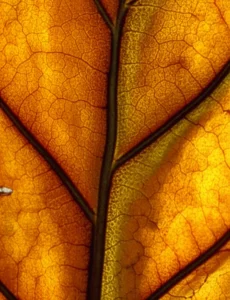Natural Defenders: How Jamun and Quercetin Shield Ovaries from Toxic Cadmium
Hello there! Let’s chat about something pretty important that affects many lives globally: infertility. It’s a big deal, and sadly, environmental baddies play a role. We’re talking about things like heavy metals, and one of the nastiest is called **Cadmium (Cd)**. You might not think about it daily, but it’s out there in our environment, even in some foods, and it can really mess with our bodies, especially the female reproductive system.
We know Cd is toxic. It’s used in industries and can sneak into our water and food chain. Once it’s in, it doesn’t leave easily and can build up, causing damage to various organs. For women, this can mean subfertility or even infertility. Why? Well, Cd seems to hit the ovaries hard, reducing the production of those crucial germ cells needed for reproduction.
Cadmium’s Sneaky Attack: Oxidative Stress and Hormonal Chaos
One major way Cd causes trouble is by creating something called **oxidative stress**. Think of it like rust in your body. It happens when there are too many unstable molecules called free radicals and not enough antioxidants to clean them up. This imbalance damages cells, including those precious ovarian cells. We saw this clearly in our study; Cd exposure cranked up the levels of a damage marker called MDA and knocked down the levels of helpful antioxidants like SOD, CAT, and GSH.
This oxidative stress is a big reason why Cd shortens reproductive lifespan. It can trigger **apoptosis**, which is essentially programmed cell death. In the ovaries, this means losing important cells like oocyte granulosa cells.
Beyond oxidative stress, Cd also throws the hormonal system into disarray. We observed significant drops in key hormones like **FSH, LH, AMH, estrogen, and progesterone** in our study subjects exposed to Cd. These hormones are vital for a regular menstrual cycle, follicle development, and overall fertility. When they’re out of whack, fertility suffers. We even saw irregular estrus cycles, which is the rat equivalent of an irregular menstrual cycle.

Finding Hope in Nature: Jamun and Quercetin
So, facing this toxic threat, where can we turn? Nature often holds answers. That’s where two potential heroes come in: **Syzygium cumini** fruit extract (SCFE), also known as Jamun or Indian blackberry, and **Quercetin (QU)**, a natural flavonoid found in many fruits and vegetables. Both are known powerhouses of antioxidants.
We were really interested to see if these natural compounds could stand up to Cadmium’s assault on the ovaries. Jamun, in particular, is packed with beneficial compounds like polyphenols, flavonoids, and anthocyanins – the stuff that gives it its beautiful purple color and its antioxidant punch. Quercetin is also a well-regarded antioxidant with anti-inflammatory potential.
Our Study: Putting Natural Remedies to the Test
We set up a study using female rats, dividing them into groups. One group got just water (our control), another got Cadmium, and others got Cadmium along with either Quercetin or Syzygium cumini extract at two different doses (200 mg/kg and 400 mg/kg). We wanted to see if these natural treatments could protect the ovaries from the damage Cd causes.
We looked at all the things Cd messed up: the estrus cycle, hormone levels, oxidative stress markers, and even the tissues themselves under a microscope. Crucially, we also delved into the molecular level, examining genes and tiny regulators called microRNAs that control cell life and death.
The Results: Nature Fights Back!
What did we find? Well, the Cadmium group showed all the negative effects we expected – irregular cycles, low hormones, high oxidative stress, and signs of tissue damage. But here’s the exciting part: when we added Quercetin or, even better, the Syzygium cumini extract, things started looking up!
The rats receiving SCFE or QU alongside Cadmium showed significant improvements. Their hormone levels bounced back towards normal. The signs of oxidative stress were greatly reduced – MDA went down, and those helpful antioxidants went back up. And the tissue health improved dramatically; we saw much healthier ovarian follicles and uterine lining compared to the Cadmium-only group.
Interestingly, the higher dose of Syzygium cumini extract (SCFE400) often showed superior effects compared to the lower dose and even Quercetin in restoring hormone levels and boosting antioxidant defenses. This suggests there’s a dose-dependent benefit with the Jamun extract.

Unraveling the Molecular Shield: miRNA-204-5p and Apoptosis
Now, let’s get a bit sciency, but stick with me because this is where we found a really cool piece of the puzzle. Remember we talked about apoptosis, the programmed cell death? Cadmium triggers this. We looked at some key players in the cell death pathway, specifically genes like **Bcl-2** (which helps cells survive) and **Bax**, **Caspase 3**, and **Caspase 9** (which promote cell death).
Cadmium exposure led to a decrease in the survival gene (Bcl-2) and an increase in the death genes (Bax, Caspase 3, Caspase 9). This imbalance pushes cells towards apoptosis.
But we also looked at something called **miRNA-204-5p**. MicroRNAs are like tiny conductors that tell genes what to do. We discovered that Cadmium significantly *increased* the expression of miRNA-204-5p. And guess what? This specific miRNA is known to *decrease* Bcl-2 expression and *increase* Bax and Caspase levels. So, Cadmium seems to use miRNA-204-5p as a trigger for apoptosis!
Here’s the amazing part: both Syzygium cumini extract and Quercetin significantly *reduced* the levels of this troublesome miRNA-204-5p. By lowering miRNA-204-5p, they allowed Bcl-2 levels to go back up and brought down the levels of Bax, Caspase 3, and Caspase 9. Essentially, they helped the cells resist Cadmium’s death signal by interfering with this specific molecular pathway. This is one of the first times this particular mechanism has been shown for these natural compounds against Cadmium toxicity.

Why Does Jamun Extract Work So Well?
The Syzygium cumini extract is a complex mix of compounds. Our analysis showed it contains Quercetin, but also other beneficial substances like Kaempferol, cyanidin, gallic acid, and various anthocyanins and phenolic acids. It seems the combined power of these ingredients provides a stronger protective effect than Quercetin alone in many cases. They work together as a potent antioxidant team, reducing the initial oxidative stress caused by Cadmium, and also directly influencing the apoptotic pathways we discussed, including that crucial miRNA-204-5p step.
Looking Ahead
What does this all mean? It means that natural sources like Syzygium cumini fruit and Quercetin hold significant promise as protective agents against the harmful effects of environmental pollutants like Cadmium on reproductive health. While this study was in rats, the findings are exciting and suggest potential avenues for human health.
We’re planning further research to pinpoint exactly which compounds in the Jamun extract are doing the heavy lifting and how they interact. Ultimately, studies like this pave the way for potentially developing natural therapies or supplements to help protect fertility in the face of environmental challenges. It’s a reminder that sometimes, the most powerful medicines can be found right in nature.
Source: Springer







